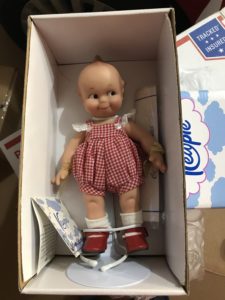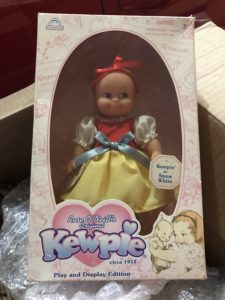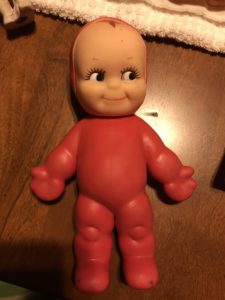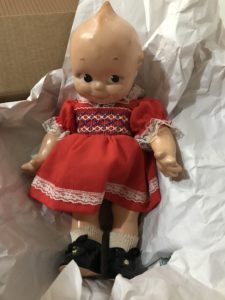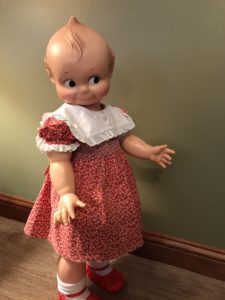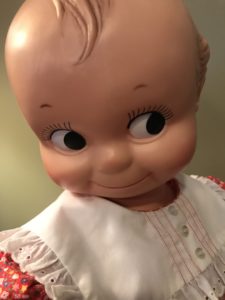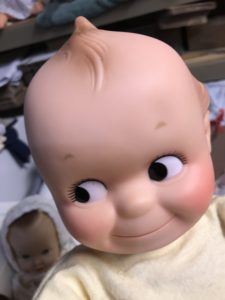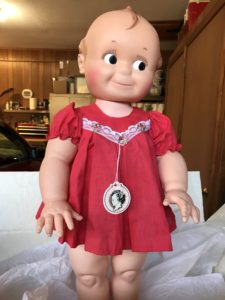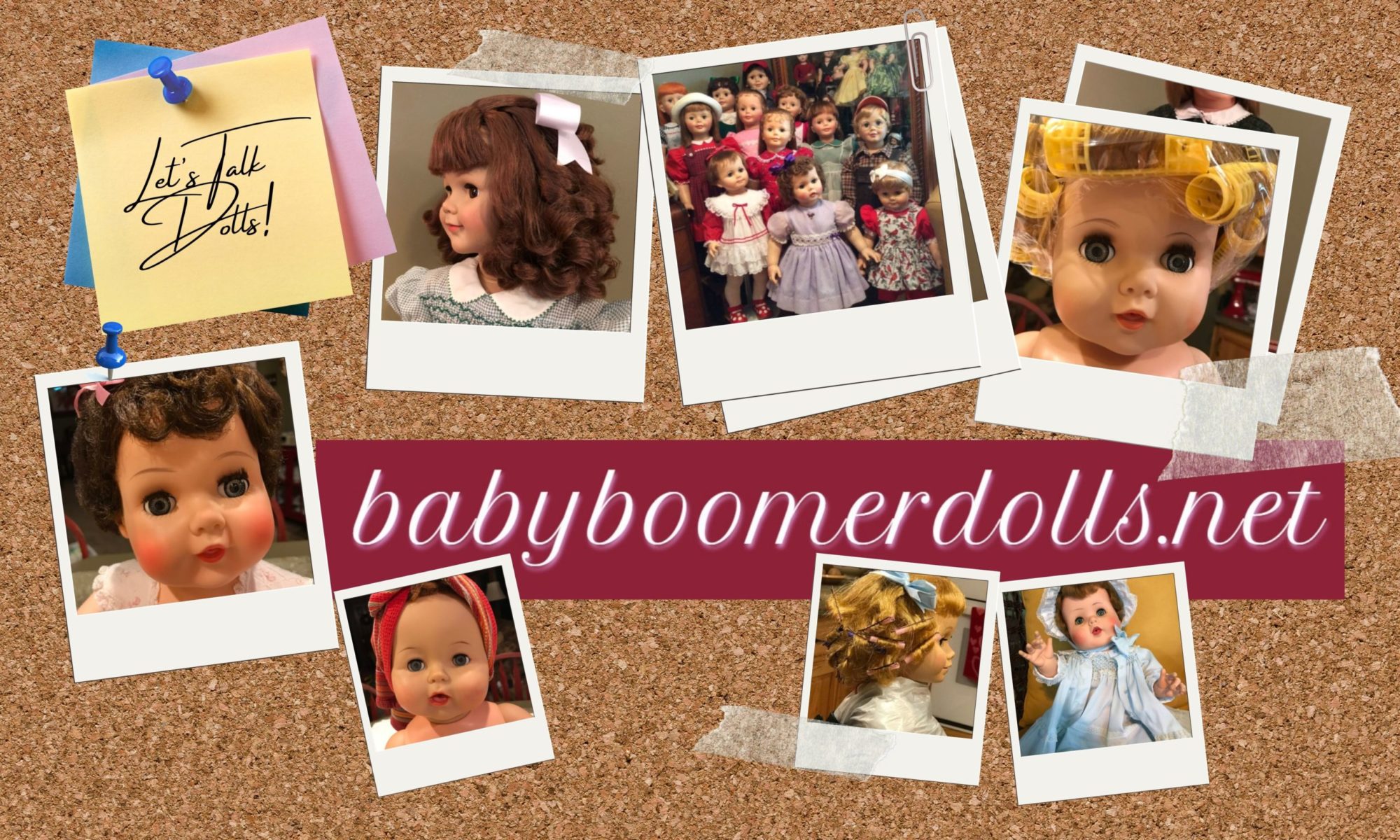I am a Kewpie Doll lover from waaaayyy back. I love those sweet little mischievous faces and side glances. What about you? Do you like Kewpie Dolls? Do you know any history on those little sweeties other than they were created by Rose O’Neill? I have been doing some research and found out several things about Kewpies that I didn’t know. I will share them with you on this post….
Rose O’Neill claimed that the idea of Kewpies came to her in a dream. According to O’Neill, these chubby, sexless, elfin cherubs were modeled after her baby brother. A Kewpie’s purpose is to do good deeds in a humorous way, brightening the lives of humans with love and laughter.
The first Kewpies began as decorations for love stories published in Ladies Home Journal. The editor suggested that O’Neill develop the characters and add stories in verse for the young readers. (Young readers for a ladies magazine??). The first Kewpie story appeared in 1909. The title of said story was “The Kewpies and the Airplane”. It showed the Kewpies investigating the new mechanical wonder of the day. Their popularity exploded. Children loved them and wrote in to the magazine asking if there was a Kewpie they could actually hold and cuddle.
O’Neill sculpted the first Kewpie herself. She visited doll factories in both Europe and the United States before selecting a manufacturer in Germany. The rest is history…
The Kewpies were BIG. The Kewpie craze became so big that thirty German factories were kept busy manufacturing the dolls. By 1913, about five million Kewpies had been sold. World War I began and put an end to the German connection. But even the war didn’t keep Kewpies out of the stores. Factories in Japan, many unauthorized, took advantage of the opportunity and launched thousands of Kewpies into the American market. After the war ended, O’Neill delegated the manufacture of these precious Kewpies to Joseph Kallus, a young sculptor. In 1916 Kallus had founded the Rex Doll Company to produce composition Kewpies when supplies from overseas had been halted by the war. Later Kallus’s Kewpies were plastic, then vinyl. He kept Kewpies alive until the early 1980s.
Over the years, many manufacturers were licensed to produce Kewpies. You may have a Kewpie produced by the Effanbee Doll Company. Or if your Kewpie is from the late 1960s, your Kewpie might have been made by Knickerbocker or by Milton Bradley.
The International Rose O’Neill Club, founded in the late 1960s, holds a Kewpiesta! This is a FOUR day Kewpie collector’s convention and festival. It is held every April at Bonniebrook. This is O’Neill’s Missouri home. Sounds like fun!
During World War I, soldiers marched off to war with tiny Kewpies in their pockets. The tiny dolls were reminders of loved ones back home and were thought of as good-luck tokens. There are many collectors that still keep Kewpies around for pretty much the same reasons. The Kewpie is over a century old and STILL doing their intended job – they make people happy!
I have looked through my photos and found a few of my own Kewpies to share with you here. They do, indeed, do the job for which they were intended….They bring a smile to your face!
Is there a doll that you would like to know more of the history behind it? Let me know if so and we will try to get some of that information here at Babyboomerdolls.net. Until we get together again and “Let’s talk Dolls”….
Hugs,
Lynn
